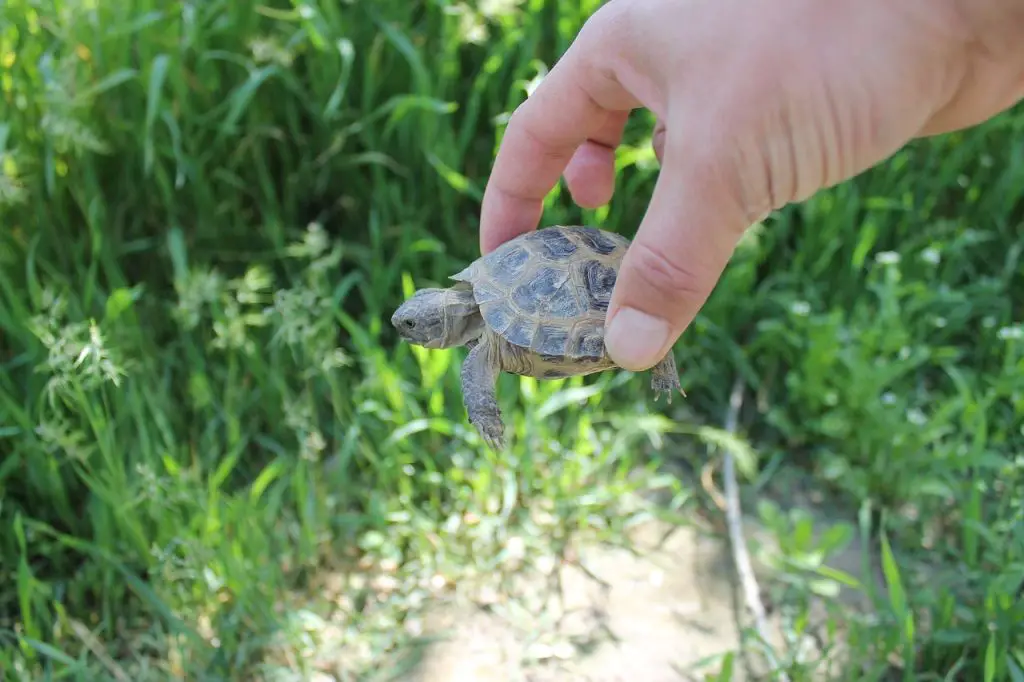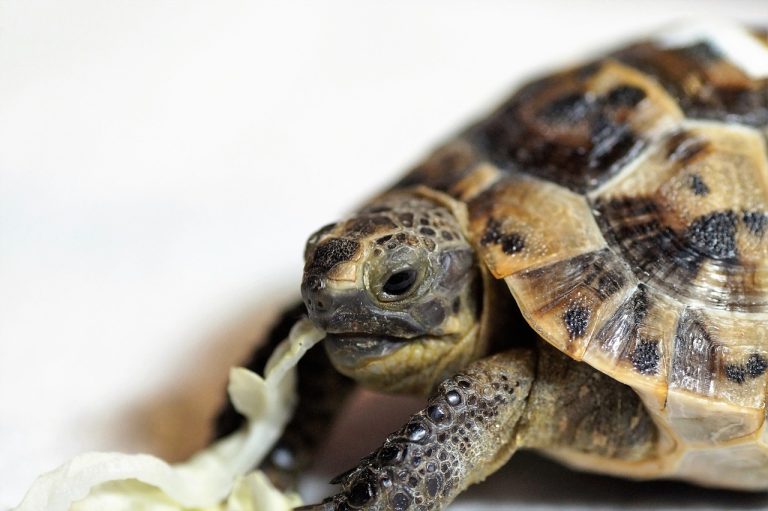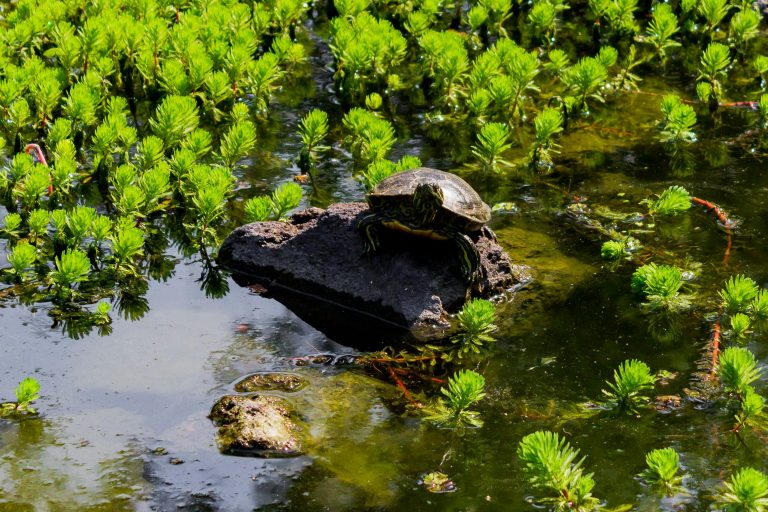How Can I Ship My Turtle? [Foolproof Guide]
Transporting turtles can present challenges due to their specific needs and the need to ensure their well-being throughout the journey. A comprehensive guide is essential to assist you through the essential procedures and make shipping as smooth and stress-free as possible.
It’s crucial to transport turtles in a temperature-controlled shipping box equipped with proper insulation and ventilation to provide the best possible conditions for your turtle during transit. Finding a shipping company willing to handle turtle transportation is also important.
Whether you’re shipping a turtle due to a change in environment or for any other reason, knowing the proper procedures is essential.
From selecting the right shipping containers to ensuring the proper atmosphere and handling practices, we’ll cover everything here to help you safely transport your turtle.
Following these guidelines can help minimize the stress your turtle experiences during transport, increasing the chances of it arriving safely at its destination.
Key Takeaways:
- Thorough preparation, including obtaining permits and selecting the right carrier, is crucial for safe turtle transport.
- Choose a container with proper insulation and ventilation to ensure your turtle’s comfort during transit.
- Verify the legality of transporting turtles and obtain a health certificate to ensure your turtle’s well-being during transport.
- Maintain appropriate temperature and humidity conditions to keep your turtle safe during the journey.
- Pack enough food, coordinate with carriers, and consider opting for overnight shipping for the best results.
- FedEx permits turtle shipping under specific guidelines, so make sure to adhere to temperature and packaging regulations.

How Can You Ship A Turtle? 13 Steps
Handling turtles during shipping requires extra care due to their delicate nature. Here’s what you’ll need to get started:
- Permits and Carrier Selection:
Ensure you have the necessary state and federal permits before transporting a turtle. Finding a shipping company willing to handle turtles may take some effort due to their unique requirements. - Creating a Suitable Enclosure:
Select a suitable shipping container with good insulation, ventilation, and secure locks to prevent escapes. The container should comfortably accommodate substrate, air pumps, moist paper towels for humidity, and allow the turtle to turn around. - Providing Comfort and Insulation:
Line the container with insulation and absorbent material like newspaper. Place the turtle in the container with additional protection like newspaper or bubble wrap to ensure a safe and comfortable ride. - Maintaining Hydration:
Include a damp paper towel in the container to help the turtle stay hydrated during the journey. The turtle’s well-being during transport relies on its ability to remain hydrated. - Legal Considerations:
Check if your destination permits the shipment of turtles and inquire about any specialized shipping permissions required by the destination country. - Selecting a Carrier Service:
Contact a shipping company such as USPS or FedEx to explore your options for sending the turtle. Be prepared to provide details about the turtle’s location, intended use, and any specific requirements. - Health Certification and Documentation:
Ensure the turtle has a veterinarian’s health certificate, verifying its good health and current vaccination status, as required by most carriers. - Temperature and Humidity Considerations:
Ensure the turtle can withstand the conditions of the shipping depot and the temperature and humidity inside the container to prevent any adverse effects on its health. - Detailed Handling Instructions:
Provide specific instructions on how the carrier should handle the turtle, including temperature limits and any additional precautions. - Packaging Food:
Include enough food for the turtle during transit, ensuring compliance with the shipping company’s policies regarding live or frozen food. - Choosing Overnight or Express Shipping:
Opt for expedited shipping to minimize transportation delays and ensure the turtle’s well-being. - Coordinate Pickup/Drop-Off:
Arrange with the carrier for the turtle’s pickup or delivery, understanding their delivery requirements and timeline. - Monitor the Journey:
Keep track of the carrier’s tracking information and stay informed about any issues or delays to ensure the turtle’s safety.
Shipping a turtle safely requires thorough preparation and adherence to regulations. By following these instructions, you can ensure your turtle arrives safely at its destination.
How Do You Pack A Turtle For Shipping?
Ensuring the safety and comfort of your turtle during transport is paramount. Here’s how to pack your turtle for travel:
- Select the Right Container:
Choose a sturdy container with adequate ventilation and size appropriate for your turtle. Ensure there’s enough room for movement and additional items. - Include an Absorbent:
Line the bottom of the container with newspaper or paper towels to absorb any spills and provide extra padding. - Construct Cozy Bedding:
Create a comfortable bed for your turtle by adding a layer of substrate or bedding it’s familiar with on top of the absorbent material. - Provide Humidity:
Maintain humidity levels by placing a moist paper towel or cloth in the container, especially for longer journeys. - Insulate the Container:
Add extra insulation like bubble wrap or additional newspaper to regulate temperature, considering weather conditions. - Provide Familiar Elements:
Include familiar items such as a hiding spot, basking platform, or decor to make the turtle feel at home and reduce stress. - Secure the Turtle:
Place the turtle securely in the container, ensuring it has enough space to move comfortably but is not too loose. For smaller turtles, a plastic deli cup with ventilation holes can be used. - Label the Container:
Clearly label the container as housing a living creature and provide contact information for any shipping inquiries or emergencies. - Close the Container Securely:
Ensure the container is tightly closed to prevent accidental opening during transit. Use tape to seal any gaps or openings. - Provide Feeding Instructions:
If the journey is lengthy, provide clear feeding instructions for the carrier and pack any necessary food or supplements.
By following these packing guidelines, you can ensure your turtle travels safely and arrives at its destination unharmed.
Does Fedex Ship Reptiles?
FedEx offers a convenient option for shipping reptiles, including turtles. Here’s what you need to know:
- FedEx Ground Services:
FedEx Ground services permit the shipping of reptiles, provided they comply with FedEx’s Live Animal Transportation rules and all relevant laws. - Proper Packaging:
Ensure your turtle is securely packaged according to FedEx’s guidelines. This includes marking the package as “Live Animal” and using an air-breathing container with a secure lid and absorbent material to prevent leaks. Additionally, use a sturdy FedEx-approved shipping box. - Inspection:
FedEx drivers are responsible for inspecting packages to ensure compliance with regulations before signing the air waybill at pickup. - Temperature Considerations:
Maintain proper temperatures during transit, as specified by FedEx. Live animals must reach their destination within 48 hours. - Contact FedEx Support:
If you have any questions or concerns, reach out to FedEx’s support team for assistance.
By following these guidelines and utilizing FedEx’s services, you can safely ship your turtle to its destination.
Is It Possible To Take Your Pet Turtle On A Plane?
Unfortunately, bringing your pet turtle on an aircraft as a carry-on is not feasible. While some airlines do permit certain animals like birds, dogs, and cats in the cabin, reptiles, including turtles, are generally not allowed due to health concerns for passengers.
Additionally, the confined space and potential lack of oxygen in the airplane cabin may cause discomfort for your turtle during the journey. Furthermore, various jurisdictions may require quarantine periods and vaccinations for exotic pets like turtles, adding further complications to air travel with them.
Exploring alternative methods of transportation for your turtle, such as ground transportation or shipping services, would be advisable in this situation.
Why Are Turtles Not Allowed On Planes?
Indeed, there are significant concerns regarding the health and safety risks associated with allowing turtles on airplanes.
One major concern is the potential transmission of Salmonella bacteria, which is commonly carried by turtles, particularly smaller species. Salmonella can cause severe gastrointestinal illnesses in humans if transmitted through contact with the turtle or its habitat.
Furthermore, the stress and anxiety that a turtle may experience if brought aboard an aircraft could lead to disruptive behavior, posing challenges for both passengers and crew members.
Moreover, there is a risk of the turtle escaping from its enclosure during the flight, potentially causing disturbances or even safety hazards on board.
Due to these various concerns related to passenger and crew well-being, airlines generally do not permit turtles to be transported on their flights.

How Long Does It Take To Ship A Turtle?
Shipping a turtle typically ranges from one to three days, depending on the carrier and the chosen shipping method. While next-day delivery is sometimes available, opting for a slightly longer transit time ensures gentler handling of the turtle throughout the journey.
It’s crucial to prioritize the safety and well-being of the turtle during transportation by using appropriate packaging. The shipping box should be securely padded to prevent any movement and protect the turtle from temperature fluctuations. Additionally, ensure that the packaging does not contain any sharp objects, such as nails or cables, which could potentially harm the animal.
Since exposure to cold temperatures can be dangerous for turtles, it’s essential to consider transportation options that maintain a suitable and consistent temperature for the animal’s comfort and safety.
Before arranging shipment, it’s advisable to confirm with the chosen carrier or shipping service that they have experience transporting turtles and are equipped to handle them properly. This ensures that the turtle will receive the care and attention it needs throughout the shipping process.
Conclusion
To ensure the safety and welfare of these delicate creatures during transportation, meticulous preparation and attention to detail are essential when shipping a turtle.
By following the recommended procedures, which take into account the unique needs and requirements of turtles during travel, you can significantly increase the likelihood of a successful and stress-free shipping experience.
This comprehensive guide covers various aspects of turtle care, including creating an appropriate habitat, maintaining cleanliness, selecting nutritious food, and addressing common health issues.
By referring to this resource, turtle owners can ensure that their pets receive the proper care and attention they need to thrive.


![Turtle Vs. Tortoise Vs. Terrapin [Difference Chart]](https://spreadhapiness.com/wp-content/uploads/2024/04/terrapin-1-768x576.jpg)


